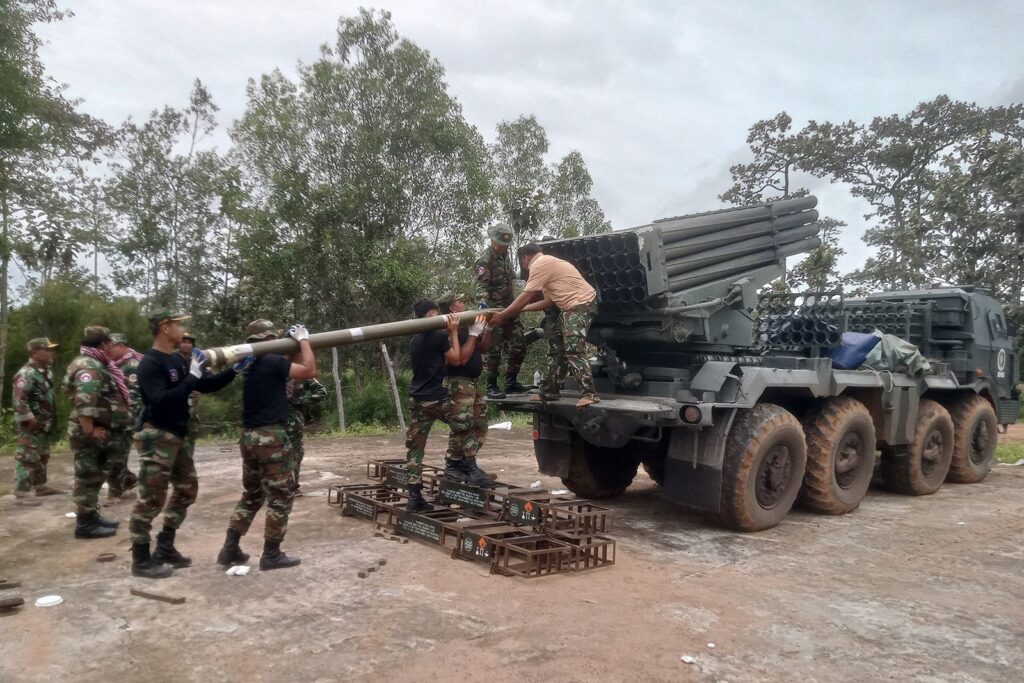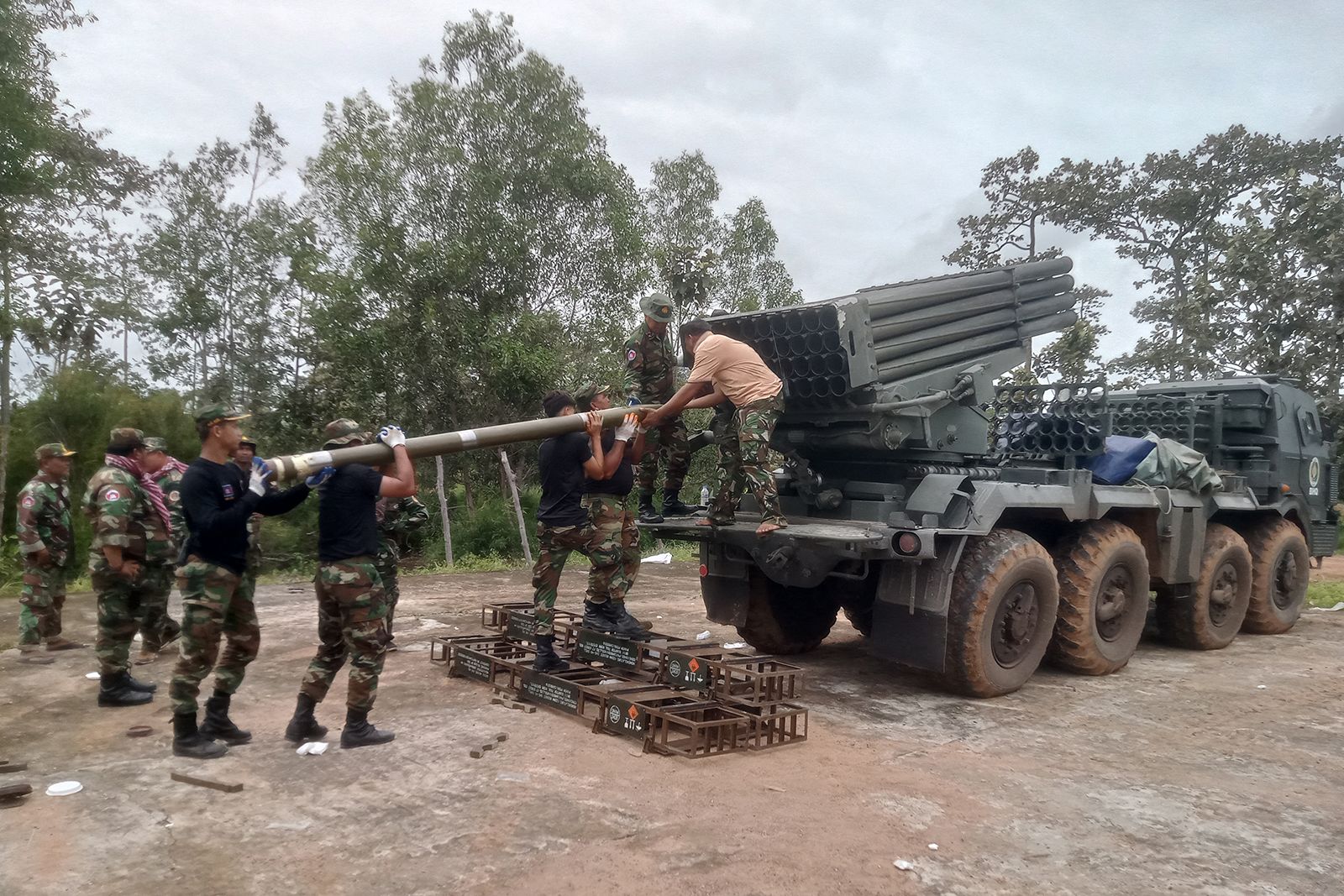Thailand and Cambodia: A Border on Fire
The fragile peace between Thailand and Cambodia has shattered, giving way to a dangerous military escalation along their shared border on Thursday, July 24, 2025. This latest outbreak of violence, marked by Thai airstrikes and Cambodian rocket fire, represents a deeply concerning turn in a dispute rooted in historical grievances, nationalist fervor, and the elusive demarcation of their 800-kilometer boundary.
The spark that ignited the flame

Weeks of simmering tensions reached a boiling point following a series of incidents in the disputed Emerald Triangle area, a tri-border region where Thailand, Cambodia, and Laos meet. In May, a deadly skirmish resulted in the death of a Cambodian soldier, triggering accusations and counter-accusations between Bangkok and Phnom Penh. This was followed by a landmine explosion that wounded Thai soldiers, an event Thailand claims was caused by recently planted Russian-made mines. Cambodia vehemently denies this, attributing the blasts to unexploded ordnance from past conflicts that continue to scar the region.
The immediate trigger for Thursday’s escalation appears to be a reported cross-border rocket and artillery attack by Cambodia, resulting in the death of at least one Thai civilian and injuries to several others. Thailand alleges these attacks targeted civilian areas, including a hospital and a petrol station, leading to a grim tally of at least nine civilian casualties on their side.
Thai retaliation and a dangerous escalation
In response, Thailand launched airstrikes on Cambodian military targets using F-16 fighter jets. Thai military reports confirm the deployment of six F-16 jets from Ubon Ratchathani province, striking two Cambodian military targets on the ground. Cambodia’s Ministry of Defense swiftly condemned the Thai action, accusing Thailand of an “armed assault” and alleging that Thai jets dropped two bombs on a road in Cambodian territory. Cambodia maintains that its forces responded in self-defense, emphasizing their right to protect their sovereignty and territorial integrity.
This military escalation has been accompanied by a sharp deterioration in diplomatic relations. Thailand expelled Cambodia’s ambassador, and Cambodia retaliated by recalling its envoy and ordering Thai diplomats to leave. Thailand also closed several border crossings, disrupting travel and trade between the two nations. Cambodia, in turn, implemented economic measures including bans on Thai imports like movies, television shows, fruits, and vegetables, and even restricted Thai internet and power supply links. This tit-for-tat retaliation underscores the severity of the crisis and the deep mistrust that has taken root between the two countries.
The long shadow of history: Preah Vihear and the ICJ
At the heart of this enduring dispute lies the 11th-century Preah Vihear temple, a UNESCO World Heritage site perched atop a cliff in the Dangrek Mountains. The temple holds immense historical and cultural significance for both Cambodia and Thailand, and its ownership has been a source of contention for decades.
The International Court of Justice (ICJ) ruled in 1962 that the Preah Vihear temple belonged to Cambodia. Despite Thailand accepting this ruling, disagreements over the surrounding area have continued, leading to deadly skirmishes in 2008 and 2011. In 2013, the ICJ clarified its ruling, confirming Cambodia’s sovereignty over the temple’s vicinity and ordering Thai troops to withdraw. However, disputes persist over maps, military patrols, and border demarcation, including the Emerald Triangle region where recent clashes occurred.
Humanitarian and political consequences
The conflict has resulted in thousands of civilians being evacuated from border areas on both sides. Border closures and trade disruptions have also negatively impacted local economies. Cambodia, being Thailand’s third-largest trading partner, is likely to experience a more immediate impact on tourism and exports.
The border conflict has also affected Thai domestic politics, particularly with the suspension of Prime Minister Paetongtarn Shinawatra from office following a leaked phone call regarding the border issue. This incident highlights the connection between the border dispute, nationalism, and internal political struggles.
The path forward: diplomacy or further conflict?
With both militaries mobilized, diplomatic relations strained, and civilian casualties rising, the situation is unstable. While a full-scale war is considered unlikely, the potential for continued skirmishes and escalation is a concern. Cambodia has called for an urgent meeting of the UN Security Council.
Renewed diplomatic efforts are essential. As ASEAN members, both countries are expected to resolve disputes peacefully. However, ASEAN mediation has been limited by the non-interference principle. Bilateral negotiations through existing mechanisms like the Joint Boundary Commission could help de-escalate tensions. International bodies could also assist in facilitating dialogue. A lasting peace requires both nations to prioritize stability, reduce nationalist rhetoric, and pursue a diplomatic solution that respects sovereignty and addresses underlying issues. The heavily militarized border areas remain volatile, and the coming days are crucial in determining the path forward.

